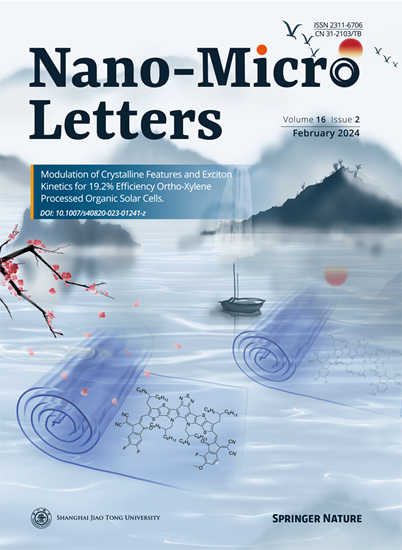Surpassing Shockley–Queisser Efficiency Limit in Photovoltaic Cells
IF 36.3
1区 材料科学
Q1 Engineering
引用次数: 0
Abstract
Highlights
-
A record power conversion efficiency of 50%–60% was achieved in Si solar cells by inhibiting the lattice atoms’ thermal oscillations at low temperatures.
-
Enhancing the light penetration depth can effectively mitigate carrier freeze-out and expand the operational temperature range of silicon cells to 10 K.
光伏电池超越Shockley-Queisser效率极限。
Shockley-Queisser (S-Q)模型将单结太阳能电池的功率转换效率(PCE)的理论极限设定在33%左右。最近,在n型单结硅太阳能电池中,通过在低温下抑制光转化为热,首次实现了50%-60%的PCE。了解这些新的观测结果为设计具有更高PCE的太阳能电池提供了巨大的机会,为低温设备和外太空和深太空探索提供了高效和强大的能源。
本文章由计算机程序翻译,如有差异,请以英文原文为准。
求助全文
约1分钟内获得全文
求助全文
来源期刊

Nano-Micro Letters
NANOSCIENCE & NANOTECHNOLOGY-MATERIALS SCIENCE, MULTIDISCIPLINARY
CiteScore
32.60
自引率
4.90%
发文量
981
审稿时长
1.1 months
期刊介绍:
Nano-Micro Letters is a peer-reviewed, international, interdisciplinary, and open-access journal published under the SpringerOpen brand.
Nano-Micro Letters focuses on the science, experiments, engineering, technologies, and applications of nano- or microscale structures and systems in various fields such as physics, chemistry, biology, material science, and pharmacy.It also explores the expanding interfaces between these fields.
Nano-Micro Letters particularly emphasizes the bottom-up approach in the length scale from nano to micro. This approach is crucial for achieving industrial applications in nanotechnology, as it involves the assembly, modification, and control of nanostructures on a microscale.
 求助内容:
求助内容: 应助结果提醒方式:
应助结果提醒方式:


